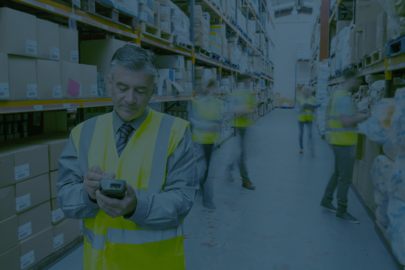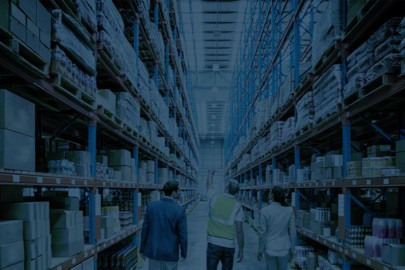The Importance of Choosing a Reliable 3PL Partner in the Houston Market
If you were asked to name the five most populous cities in America, Houston, Texas, would probably not make the list. New York, Los Angeles, and Chicago are the cities that come to mind. Maybe Miami, Phoenix, Seattle, or San Francisco. Yet, Houston is the largest city in Texas and the fourth largest city in the United States.
Houston is also a deep-water port and the fifth-largest container handler in the US. As far back as the 1850s, Houston improved the Buffalo Bayou waterway to support larger shipping vessels. In 1853, Houston added its first railway service. The 1950s and 1960s saw the first interstates arrive in the area and the opening of Houston’s airport to international travel. Before long, the area became a transportation hub.
Today, Houston businesses have access to multiple shipping channels. They can ship cargo by sea or air. They can use intermodal services to transport freight by rail or truck. Companies can even use the Gulf Intracoastal Waterway to transport goods without using sea-going vessels. With so many options, companies need a third-party logistics (3PL) partner to ensure their products are shipped cost-effectively.
Proximity to Other Markets
Houston is 240 miles from Dallas, Texas, and 350 miles from the Mexico border. Ground transportation can reach both locations in under four hours. Dallas connects to major markets in the Mid- and Southwest. Cargo can reach New Orleans in just over five hours, where it can be forwarded to major markets in the Southeastern United States and north along the Mississippi River.
The Union Pacific and the Burlington Northern Santa Fe railroads carry cargo to and from the Port of Houston. Both railways have routes that extend across borders into Mexico and Canada. Companies can use the Gulf Intracoastal Waterway to reach markets from Galveston, Texas, to Tallahassee, Florida.
As an international hub, Houston accommodates ocean-going vessels and international flights, making it a port of call for ships and a port of entry for air travel. These capabilities provide businesses with direct access to international markets.
Houston’s strategic location to major markets and its diverse transportation options provide companies with cost-effective delivery channels. Its flexibility enables shippers to pivot if supply chain disruptions occur. 3PL providers help shippers identify the best opportunities to minimize the impact of a service disruption.
Nearshoring and Manufacturing
Nearshoring in the supply chain is the practice of outsourcing work to companies located in neighboring countries. Usually, the countries share a border and are within the same time zone. This move, especially in manufacturing, is an attempt to future-proof the supply chain.
The last four years have demonstrated how fragile the supply chain is. Because companies sourced products from a single supplier, their supply chains were disrupted when the supplier could no longer deliver the products. Chaos ensued, with manufacturers stopping production until parts became available.
Houston can facilitate nearshoring with Mexico as it is only 350 miles from the border. For some manufacturers, facilities in Mexico may be closer to their markets than their US factories or assembly plants. Adopting nearshoring can improve resiliency, simplify supply chains, and reduce costs. For companies eyeing nearshoring benefits, establishing a reliable 3PL partner becomes pivotal in streamlining cross-border operations.
Great Positioning for Distribution
Houston sits at the crossroads of I-10, which runs east-west across the Southern US, and I-45, which runs north-south. The 610 loop allows traffic to bypass downtown Houston so traffic moves smoothly. Houston also has two airports:
- George Bush Intercontinental Airport
- William P Hobby Airport
The William P Hobby Airport expanded its services to accept international passengers in 2015, raising its passenger total to 13 million per year. With the 40 million passengers passing through George Bush Intercontinental Airport, Houston serves over 50 million people annually. It is the largest airport in Texas. The airports handled over 500,000 metric tons of cargo in 2022.
The 52-mile shipping channel accommodates sea-going vessels up to a depth of 45 feet. The port has eight public terminals, with two dedicated to container shipments. The Union Pacific Railroad plans to expand its on-dock rail service to reach four additional markets: Chicago, Memphis, Kansas City, and Laredo. This service streamlines the distribution of cargo from ship to shore.
Transportation Infrastructure
While I-10 and I-45 are the major arteries in Houston’s ground transportation network, the following highways also serve the Houston area:
- I-610 (Loop)
- US 59, 90, and 290
- Texas 99, 146, 225, and 288
- Hardy, Westpark, and Beltway 8 toll roads
Knowledgeable 3PL providers can leverage the extensive transportation network for seamless logistics. Knowing travel times along different routes allows 3PLs to reroute carriers to avoid delays.
3PLs can also facilitate the movement of goods in and out of Port Houston. With its eight public terminals and 24-hour operations, the port handles over 8,000 sea-going vessels and 231,000 smaller crafts per year. Moving cargo efficiently through one of the nation’s busiest ports requires experienced 3PLs.
Disaster Resilience
Until 1900, Galveston was the primary port in southeast Texas. On September 8, 1900, a category 4 hurricane destroyed the city, killing more than 8,000 people. Labeled the worst natural disaster in America, the storm opened a window for Houston to become the state’s largest port.
From its inception, Houston was acutely aware of the impact a natural disaster can have on a city. They have hurricane readiness manuals that outline preparedness steps to take to secure goods. Smaller ships can navigate the Gulf Intercoastal Waterway to move away from a storm. Alternative routes can be used to move freight inland, away from gale-force winds and storm surges.
The city is in the process of improving its drainage capabilities. Much of the damage associated with Hurricane Harvey was caused by the area’s outdated drainage system. The old system was not equipped to handle the 50 inches of rain. With federal assistance, Houston is continuing to improve its drainage systems.
Houston’s Primary Industries
Houston has grown beyond the oil industry. It now boasts a large healthcare and biotechnology sector and advanced manufacturing of pharmaceutical and medical devices. The synergies that develop across industries foster an innovative environment for continued growth—having a 3PL partner who understands the shipping requirements of each industry.
Energy
Oil has been Houston’s primary industry since large reserves were found in 1901 near Beaumont, Texas. Today, Houston is home to almost every segment of the industry, from exploration to distribution. Port Houston has the largest petrochemical complex in the nation and a large export facility for raw resins.
Houston has expanded its energy industry to include renewable energies, such as solar and wind, and with manufacturing facilities to support the emerging market. The city has also attracted energy technology firms that take advantage of the growing tech industry.
The energy sector has unique requirements for transporting and distributing products and raw materials. Having a 3PL partner who understands the industry ensures a smoother delivery experience. For example, many petrochemical products or raw materials are considered hazardous and require special shipping. Working with an experienced 3PL takes the stress out of delivery.
Healthcare and Biotechnology
Healthcare and associated firms in biotechnology and life sciences have helped make healthcare one of Houston’s primary industries. The Texas Medical Center (TMC) encompasses 61 institutions offering clinical healthcare, education, and research. TMC is the world’s largest children’s and cancer hospital. It fosters innovation in life sciences and biotechnology to improve the world’s health.
Today, Houston has more than 1,100 life sciences and biotechnology companies making advances in medical technology. Delicate medical instruments require special handling to protect them from environmental extremes. Organizations in their sector need reliable 3PL providers to ensure their products are delivered safely.
Advanced Manufacturing
Houston’s manufacturing reflects its focus on energy, healthcare, and aviation. Manufacturers deliver specialty items such as chemicals, pharmaceuticals, and equipment for oil, wind, and solar energy. With the largest manufacturer workforce in the nation, Houston is continuously building products for distribution worldwide.
Manufacturers work in conjunction with others to design and build innovative solutions, such as remote devices that monitor heart rate and medication levels. They produce components used in factories around the world and require a logistics partner that understands international shipping regulations.
Transportation & Logistics
Houston has recently added transportation and logistics to its primary market sectors. Its strategic location makes it an ideal hub for moving goods in the nation and the world. Houston sits equidistant from both coasts. It has an extensive ground transportation network and rail service is continuing to expand.
Sea and air transportation extends Houston’s reach to global markets. The ongoing maintenance and expansion of the shipping channel keep pace with demand. For example, Houston is scheduled to start work on widening the channel from 540 to 730 feet to accommodate larger sea-worthy vessels.
Symbia Logistics: Your Trusted 3PL Partner
As Houston grows, finding the right 3PL partner in Houston’s evolving landscape is crucial for companies aiming to navigate complexities effectively. Organizations must look for providers that can handle unusual requests and understand the requirements for shipping specialty items. They should look at 3PL’s technology and distribution network to ensure it has the ability to scale as needed. Most of all, companies need a 3PL partner who can navigate the increasingly complex distribution network that Houston provides.
Contact us to discuss how our experienced staff can help ensure the safe delivery of products.










